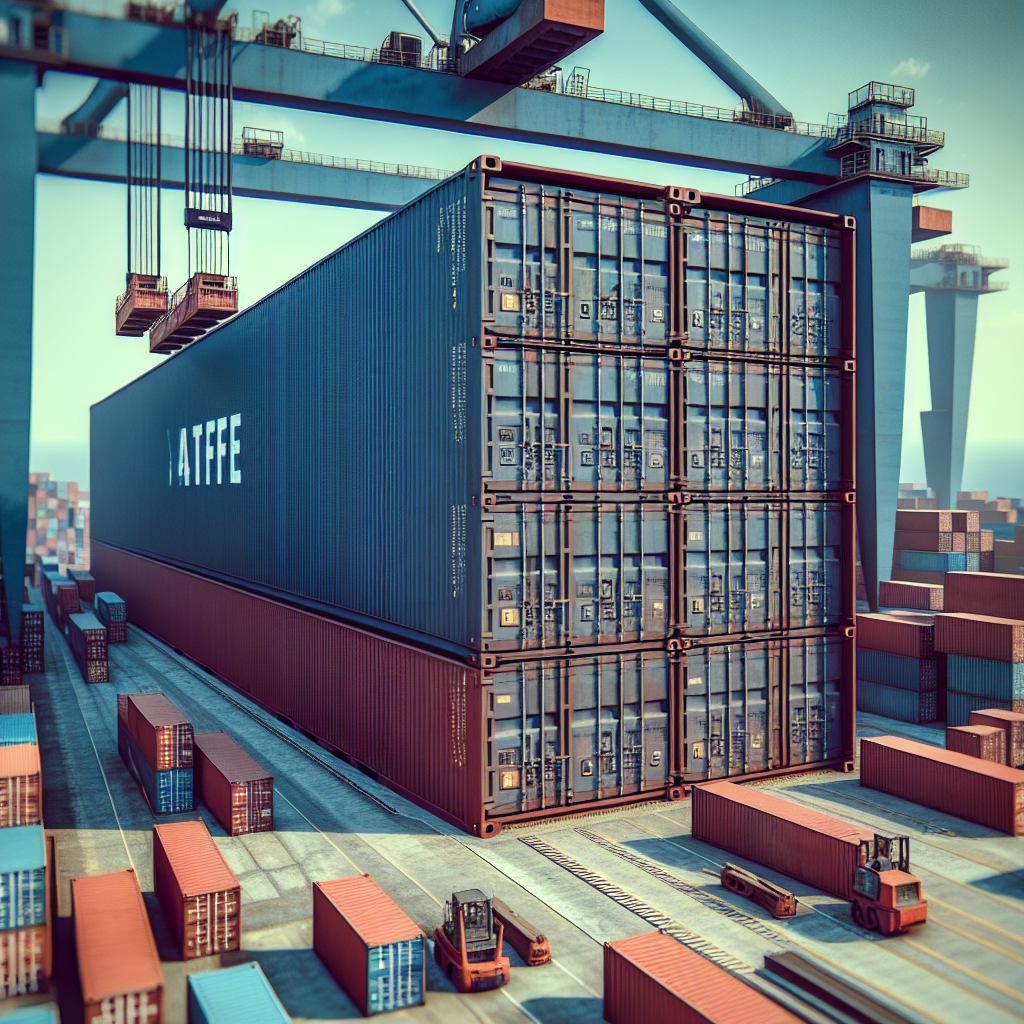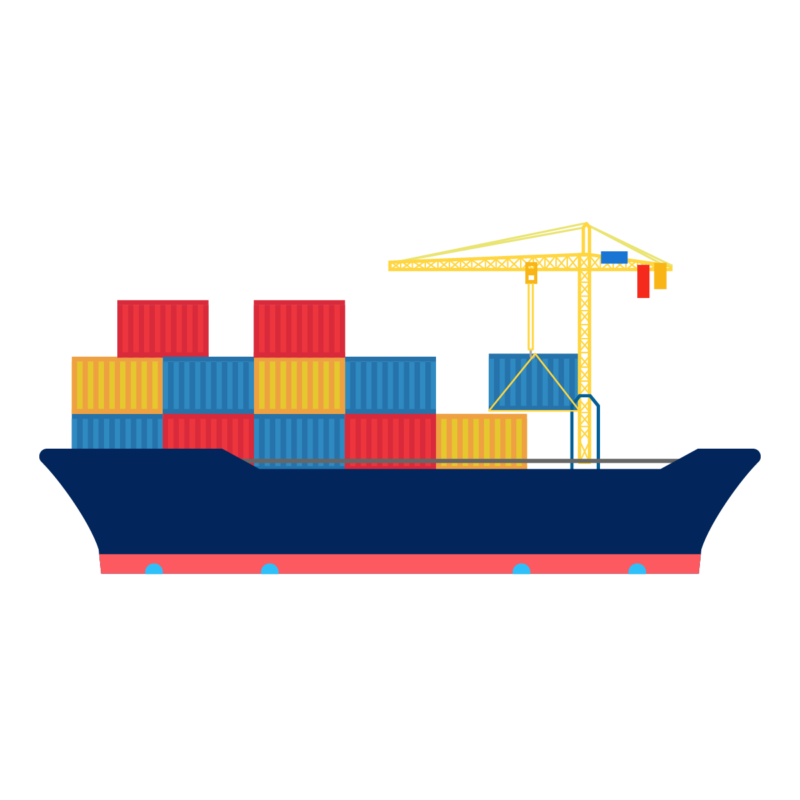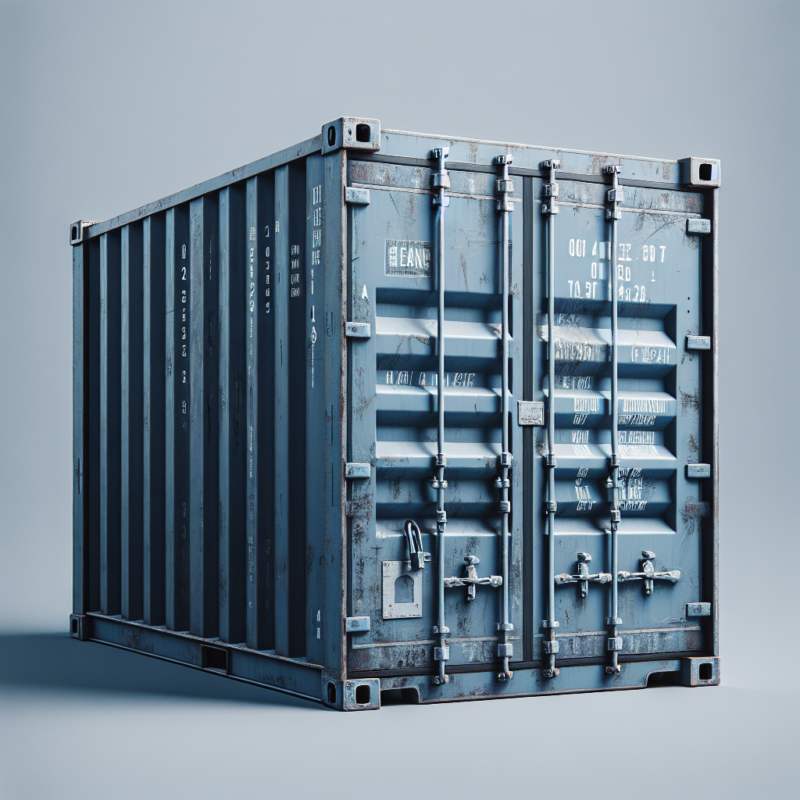Uncategorized
40 ft shipping container
Benefits of Using 40 ft Shipping Containers for International Shipping
Using 40 ft Shipping Containers. When it comes to international shipping, one of the most commonly used methods is through shipping containers. These large metal boxes are designed to transport goods across the globe, making it easier and more efficient for businesses to trade internationally. While there are various sizes of shipping containers available, the 40 ft shipping container is one of the most popular choices. In this article, we will explore the benefits of using a 40 ft shipping container for international shipping.
First and foremost, the size of a 40 ft shipping container makes it a practical choice for businesses. With a capacity of 2,350 cubic feet, it can hold a significant amount of cargo, making it suitable for large shipments. This means that businesses can transport a higher volume of goods in one go, reducing the number of trips needed and ultimately saving time and money. Additionally, the standard size of a 40 ft shipping container makes it compatible with various modes of transportation, including ships, trains, and trucks, making it a versatile option for international shipping.
Another advantage of using a 40 ft shipping container is its durability. These containers are made from high-quality steel, designed to withstand harsh weather conditions and rough handling during transportation. This ensures that the goods inside are well-protected and reduces the risk of damage or loss. Moreover, the sturdy construction of these containers allows for easy stacking, maximizing the use of space on ships and trucks, and reducing the overall cost of transportation.
Furthermore, 40 ft shipping containers are designed to be secure. They come equipped with heavy-duty locks and are made from thick steel, making them difficult to break into. This provides peace of mind for businesses, knowing that their goods are safe and secure during transit. Additionally, these containers are sealed tightly, protecting the goods from external elements such as moisture, dust, and pests. This is especially important for goods that are sensitive to these factors, such as electronics or food products.
In terms of cost, using a 40 ft shipping container can be a cost-effective option for businesses. As mentioned earlier, the larger capacity of these containers means that businesses can transport more goods in one go, reducing the overall cost of transportation. Moreover, the standard size of these containers makes them readily available, eliminating the need for custom-made containers, which can be more expensive. Additionally, the durability and security of these containers also contribute to cost savings, as there is a lower risk of damage or loss of goods.
Another benefit of using a 40 ft shipping container is its versatility. These containers can be used for a wide range of goods, from dry goods to refrigerated items. They can also be modified to suit specific needs, such as adding ventilation or insulation for temperature-sensitive goods. This makes them a practical choice for businesses that deal with various types of products.
In conclusion, the 40 ft shipping container offers numerous benefits for businesses when it comes to international shipping. Its size, durability, security, cost-effectiveness, and versatility make it a popular choice among businesses worldwide. With the increasing demand for international trade, the use of 40 ft shipping containers is expected to continue to rise, making it an essential tool for businesses looking to expand their reach globally.
Creative Uses for 40 ft Shipping Containers in Construction and Architecture

The use of shipping containers in construction and architecture has become increasingly popular in recent years. These large, durable metal boxes are not only cost-effective and easily transportable, but they also offer a unique and modern aesthetic to any project. While there are various sizes of shipping containers available, the 40 ft container is one of the most versatile and widely used. In this article, we will explore some creative uses for 40 ft shipping containers in construction and architecture.
One of the most common uses for 40 ft shipping containers in construction is for building homes. These containers can be stacked and joined together to create multi-level homes, making them a popular choice for those looking for a modern and sustainable living space. The containers can be modified to include windows, doors, and even balconies, giving the home a more traditional look while still maintaining its unique container structure. Additionally, the containers’ durability makes them ideal for withstanding harsh weather conditions, making them a practical choice for homes in areas prone to hurricanes or earthquakes.
Apart from homes, 40 ft shipping containers are also being used to build commercial spaces such as offices, restaurants, and retail stores. The containers’ modular design allows for easy customization and expansion, making them a cost-effective option for businesses looking to expand their space. These containers can also be easily transported to different locations, making them a convenient choice for pop-up shops or temporary office spaces.
In addition to traditional construction, 40 ft shipping containers are also being used in more creative ways in architecture. One such example is the use of containers in building schools and community centers in developing countries. These containers can be easily transported to remote areas and provide a quick and affordable solution for much-needed educational and community spaces. Furthermore, the containers’ sustainability aligns with the growing trend of eco-friendly and socially responsible architecture.
Another innovative use of 40 ft shipping containers in architecture is for building hotels and resorts. These containers can be stacked and arranged in various configurations to create unique and eye-catching designs. The containers’ portability also allows for these hotels to be set up in remote or unconventional locations, providing guests with a one-of-a-kind experience. Additionally, the containers’ industrial look can add a modern and edgy touch to the overall design of the hotel.
Apart from their use in building structures, 40 ft shipping containers are also being utilized in construction for their storage capabilities. These containers can be easily modified to include shelves, racks, and other storage solutions, making them ideal for storing construction materials and equipment on job sites. The containers’ durability also ensures that the stored items are protected from the elements, reducing the risk of damage or loss.
In conclusion, the 40 ft shipping container offers endless possibilities in construction and architecture. Its versatility, durability, and cost-effectiveness make it a popular choice for various projects, from homes and commercial spaces to schools and hotels. As the world continues to embrace sustainable and innovative solutions, we can expect to see even more creative uses for 40 ft shipping containers in the future.
How to Properly Inspect and Maintain a 40 ft Shipping Container for Long-Term Storage
A 40 ft shipping container is a versatile and durable storage solution that is commonly used for long-term storage of goods and materials. These containers are designed to withstand harsh weather conditions and rough handling during transportation. However, like any other storage unit, they require proper inspection and maintenance to ensure their longevity and functionality. In this article, we will discuss the steps you need to take to properly inspect and maintain a 40 ft shipping container for long-term storage.
The first step in maintaining a 40 ft shipping container is to thoroughly inspect it before use. This includes checking for any signs of damage, such as dents, rust, or holes. It is important to address these issues before storing any items in the container, as they can compromise the integrity of the unit and potentially damage your stored goods. If you notice any damage, it is best to have it repaired by a professional before proceeding with storage.
Next, it is important to ensure that the container is clean and free of debris. This includes removing any dirt, dust, or residue from the interior and exterior of the unit. If the container has been previously used, it is recommended to sanitize it with a mild detergent and water solution to eliminate any potential contaminants. Additionally, make sure to check for any signs of pests or insects and take necessary measures to prevent infestations.
Once the container is clean and free of damage, it is time to properly seal it. This is crucial for long-term storage, as it will protect your items from moisture and other environmental factors. Start by inspecting the doors and hinges to ensure they are in good working condition. If there are any gaps or cracks, use weather stripping or silicone sealant to seal them. Next, check the roof and walls for any holes or gaps and seal them with a waterproof sealant. Finally, make sure the container is level and stable to prevent any water from pooling on the roof.
In addition to regular inspections, it is important to perform routine maintenance on your 40 ft shipping container. This includes checking the container’s ventilation system to ensure proper air circulation. If the container does not have a ventilation system, consider installing vents to prevent moisture buildup. It is also recommended to periodically check the container’s flooring for any signs of wear and tear. If necessary, replace damaged flooring to prevent any potential hazards.
Another important aspect of maintaining a 40 ft shipping container is to monitor its surroundings. Make sure the container is placed on a flat and stable surface to prevent any shifting or tilting. Additionally, keep the area around the container clear of any debris or vegetation that could potentially damage the unit. It is also important to regularly check the container’s exterior for any signs of damage, such as scratches or rust, and address them promptly.
Lastly, it is crucial to regularly inspect the items stored inside the container. This includes checking for any signs of damage or deterioration, as well as ensuring that they are properly organized and secured. If you notice any issues, it is important to address them immediately to prevent further damage.
In conclusion, a 40 ft shipping container is a reliable and durable storage solution for long-term storage. However, proper inspection and maintenance are essential to ensure its functionality and longevity. By following the steps outlined in this article, you can properly inspect and maintain your 40 ft shipping container for optimal storage conditions. Remember to regularly check for any signs of damage, properly seal the unit, and monitor its surroundings to ensure the safety and security of your stored items.

